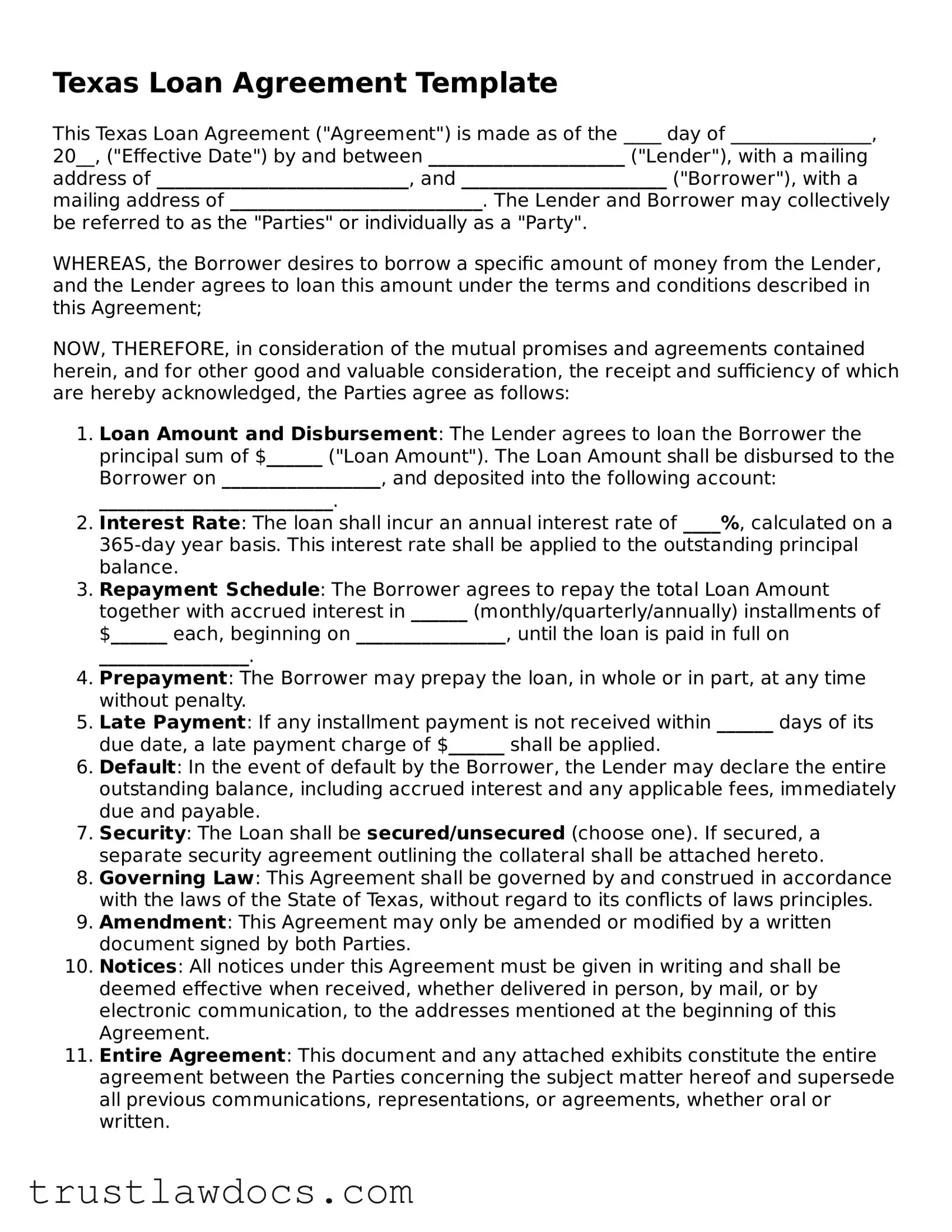Filling out a Texas Loan Agreement form is a significant step in formalizing a loan between two parties. It is a process that requires meticulous attention to detail. Unfortunately, individuals often make a variety of mistakes that can hinder the effectiveness of the agreement or even render it invalid. Understanding these common errors can help in avoiding them and ensuring a smooth, legally binding loan process.
One common mistake is not specifying the full legal names of the parties involved. This might seem like a minor oversight, but failing to use the full legal name can lead to ambiguity about who is bound by the terms of the agreement. As a result, it could become challenging to enforce the agreement in a court of law if the need arises.
Another error to watch for is neglecting to detail the loan amount in clear terms. It is not enough to just state the amount; it should be written both in numerals and words to prevent any confusion or alteration. This double clarification acts as a safeguard against misunderstandings or disputes over the exact amount of the loan.
Ignoring the inclusion of an interest rate is also a common pitfall. Texas law permits loans to carry interest, but the rate must be explicitly stated in the agreement. A failure to do so not only complicates the repayment terms but might also infringe upon state usury laws, potentially voiding the agreement or subjecting parties to legal penalties.
A critical yet often overlooked detail is the repayment plan. Many individuals forget to outline a specific schedule for repayment, including due dates and whether payments will be made in installments or a lump sum. This omission can lead to disagreements and confusion, impeding the lender's ability to enforce timely repayment.
Moreover, failing to define the loan’s purpose is another mistake. Explaining how the loan will be used can lend clarity to the agreement and set expectations for the lender about how their money will be utilized. This can be particularly important if the loan is for a specific project or investment.
Another error that diminishes the agreement's legal standing is not including clauses related to late payments or defaults. Such clauses protect the lender by outlining the consequences if the borrower fails to make payments on time or defaults on the loan entirely. Without these provisions, the lender has limited recourse in managing delinquencies.
Furthermore, many people sidestep the necessity of defining the governing law. Since laws vary from state to state, explicitly stating that Texas law governs the agreement can prevent legal ambiguities and simplify any legal disputes.
Omitting signatures is a surprisingly common error. A loan agreement must be signed by both parties to be legally binding. Sometimes, individuals fill out all the necessary information but forget this final, crucial step, leaving the agreement unenforceable.
Not having the agreement witnessed or notarized is another misstep. Although not always required, having a third party witness or a notary public attest to the signatures can add an extra layer of validity and can be critical in cases where the agreement's authenticity is questioned.
Lastly, a significant mistake is not retaining a copy of the fully executed agreement. Both parties should keep a copy for their records to ensure that there is a reference document in case of disputes. Losing the only copy of the loan agreement can lead to significant legal and financial headaches.
Avoiding these mistakes when filling out a Texas Loan Agreement form can save individuals from potential legal issues and financial disputes. By paying careful attention to the details and ensuring all aspects of the loan are clearly documented, parties can help ensure that their financial dealings proceed smoothly and without dispute.
